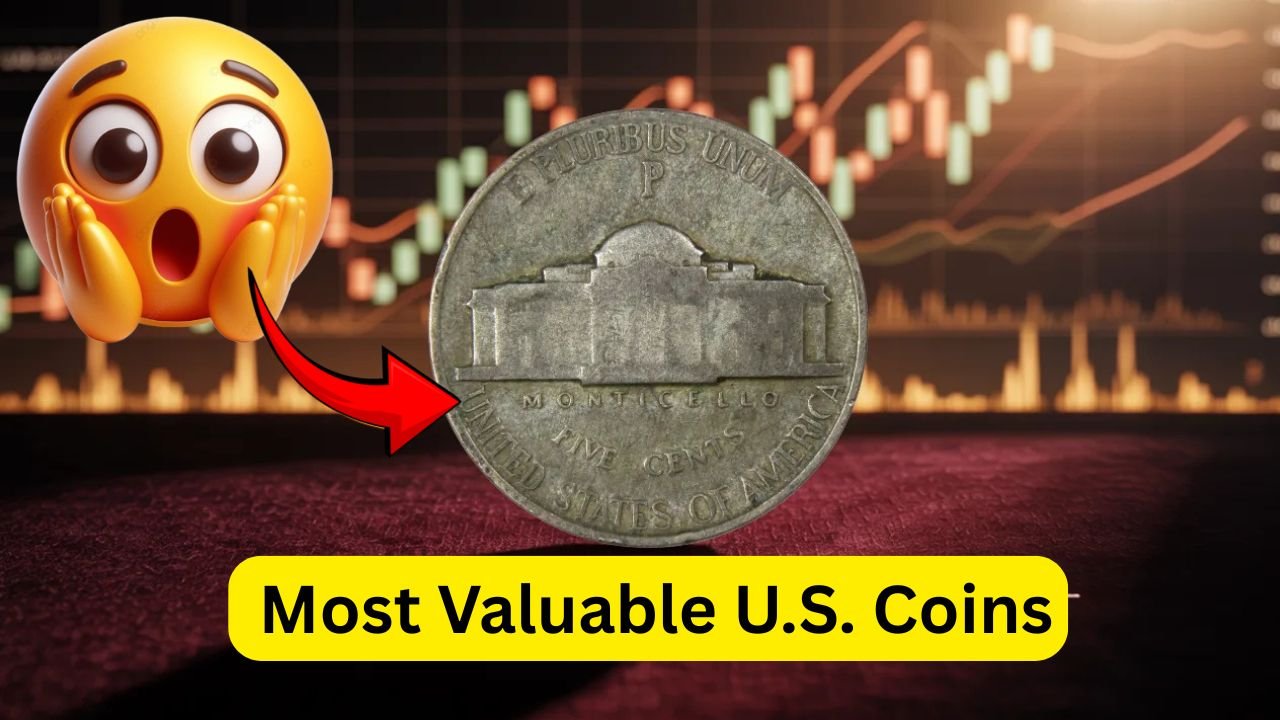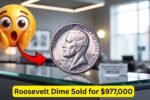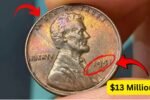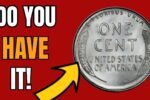Wartime Jefferson Nickel Worth Fortune: The Jefferson Nickel is one of the most recognizable coins in the United States. But few people know that a special version made during World War II is now worth a fortune. These nickels may look like ordinary pocket change, but their history, metal content, and rarity have made them highly valuable to collectors today.
What is the Wartime Jefferson Nickel?
During World War II, the U.S. needed to save nickel metal for military use. To help with the war effort, the government changed the composition of the nickel from 1942 to 1945. These nickels were made from a mix of silver, copper, and manganese instead of the usual copper-nickel blend. Because of this change, they’re now known as “Wartime Nickels.”
Why These Nickels Were Made with Silver
Nickel was an important material during the war, used in making armor, weapons, and other equipment. So, in 1942, the U.S. Mint decided to stop using nickel metal in the five-cent coin. Silver was chosen as a temporary replacement. While this made the coins look the same on the outside, their metal content became very different—and far more valuable over time.
How to Identify a Wartime Jefferson Nickel
Spotting a Wartime Nickel is easy once you know where to look. The clearest sign is a large mint mark (P, D, or S) above Monticello on the reverse side of the coin. This was the only time the Philadelphia Mint used a “P” mint mark on a coin until many years later. If you find a Jefferson Nickel with this large mark from the years 1942–1945, you might have a valuable coin in your hands.
Rare Dates and What Makes Them Special
Not all Wartime Nickels are worth the same. Some are much rarer than others. For example, the 1943-P and 1944-D are considered more common, while coins like the 1942-P and 1945-P can fetch higher prices if they’re in great condition. Coins with errors, like double dies or off-center strikes, can also be extremely valuable.
How Much Are Wartime Nickels Worth Today?
The value of these nickels depends on their condition and rarity. While a worn one might only be worth a couple of dollars, those in mint or uncirculated condition can sell for hundreds—or even thousands—of dollars at auction. Here’s a quick table to show how values can vary:
| Year & Mint Mark | Metal Content | Condition: Worn | Condition: Mint State |
|---|---|---|---|
| 1942-P | 35% Silver | $3 – $5 | $50 – $100+ |
| 1943-S | 35% Silver | $2 – $4 | $40 – $90+ |
| 1944-D | 35% Silver | $2 – $5 | $60 – $120+ |
| 1945-P | 35% Silver | $2 – $6 | $75 – $200+ |
These prices can go much higher if the coin is graded by a professional service and receives a high grade.
The Role of Collectors and Auctions
Collectors play a big part in the rising value of Wartime Jefferson Nickels. As interest in historical coins grows, more people are looking to add these silver nickels to their collections. Online auctions and coin shows are common places where these coins are bought and sold. A high-grade coin in a protective slab can sometimes go for thousands of dollars if it’s rare or has a known error.
Why These Coins Still Matter Today
Wartime Nickels are more than just rare pieces of metal—they are pieces of history. They tell a story about America’s role in World War II and how even something as small as a coin was changed to support the war effort. For coin collectors and history lovers alike, these nickels offer a connection to a dramatic moment in time.
FAQs About Wartime Jefferson Nickels
What years were Wartime Nickels made?
They were produced between 1942 and 1945.
Why is silver in a nickel coin?
Silver replaced nickel metal during WWII to help with the war supply.
How can I tell if I have one?
Look for a big mint mark (P, D, or S) above Monticello on the back of the coin.
Are all Wartime Nickels valuable?
Yes, especially if they’re in good condition or have a rare error.
Can I spend them like normal coins?
You could—but you’d be giving away something possibly worth much more than five cents!




